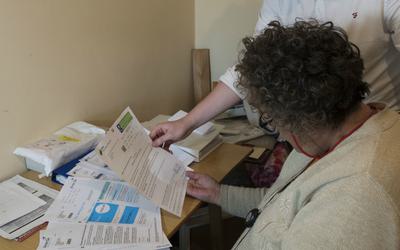- Help & Advice /
- What to do when you have energy debt
What to do when you have energy debt
Getting into debt can be very stressful, here's our guidance on what to do
Energy suppliers must provide reasonable support to help you with your energy debt.

- Check your bill is correct: your supplier may have under-estimated or overestimated your energy use as meter readings may not have been provided.
- Submit an up to date meter reading ASAP; try to send them in regularly to make sure your bills are accurate.
If you have submitted a meter reading and you still have debt
Talk to your supplier: let them know you are experiencing financial hardship. Communication is key and if the supplier doesn’t know, they can’t help. Suppliers must work with you and offer you a range of support options, including the following:
- More time to pay
- A full payment plan review
- Affordable debt repayment plans
- Payment breaks (though this won't be right for everyone)
- Repayment reductions
- Access to hardship funds
Seek independent debt advice: If you are in a multiple debt situation or do not have spare income to go towards the debt, there are several charities who can offer impartial advice: StepChange, National Debtline, Citizens Advice and others.
Options for paying back the debt
Fuel Direct: if you are in receipt of means tested benefits like Universal Credit, you can look into paying for your ongoing energy and energy debt through your benefits. Your job centre can help with this.
Check if your supplier has any financial hardship schemes: These are charitable trusts and funds that can help if you're in debt and struggling to repay. You need to have spoken to a debt adviser before applying. You'll need to complete a full income and expenditure budget sheet. You'll also need to provide proof of your income, plus give details on how your arrears have built up.
Create a budget: This is the first step towards taking control of your finances and getting your situation on track. If you have spare income to offer towards the debt, you could make an affordable offer to your supplier to repay the debt over a set time. Suppliers will normally request debt to be paid back over 1 to 3 years. Show your supplier your budget. Energy debt is a “priority debt” and you should use any excess income to make an offer to any “priority debts” before any “non-priority debts”.
If you have spare income to offer to your supplier, you could request an increase to your direct debit to cover your ongoing use and an amount towards the arrears.
Consider requesting a prepayment meter: You would pay for your energy in advance, through topping up by key, card or online account. The debt is loaded onto the meter, and the supplier will take small regular deductions from your top-ups, to pay off the debt. A prepayment meter may not be suitable for people with certain physical or mental health conditions, and you may want to discuss this with your supplier.
A checklist of help that you may be entitled to
- You may receive the £150 Warm Home Discount. If you are eligible, you will be contacted directly by your electricity supplier. For more information, contact the supplier.
- Investigate if your supplier has a financial hardship scheme.
- If you are on means tested benefits you will receive £900 in cost of living payments, in three instalments 2023/2024. £150 disability benefits cost of living payment.
- £300 top up to Winter Fuel Payment for people of pensionable age.
- Check if you are on your suppliers Priority Services Register (if you have young children, medical conditions or any other vulnerability).
- Household Support Fund: Under the government Household Support Fund Scheme, you may be able to get help towards your winter energy bills. You can find out more information here.